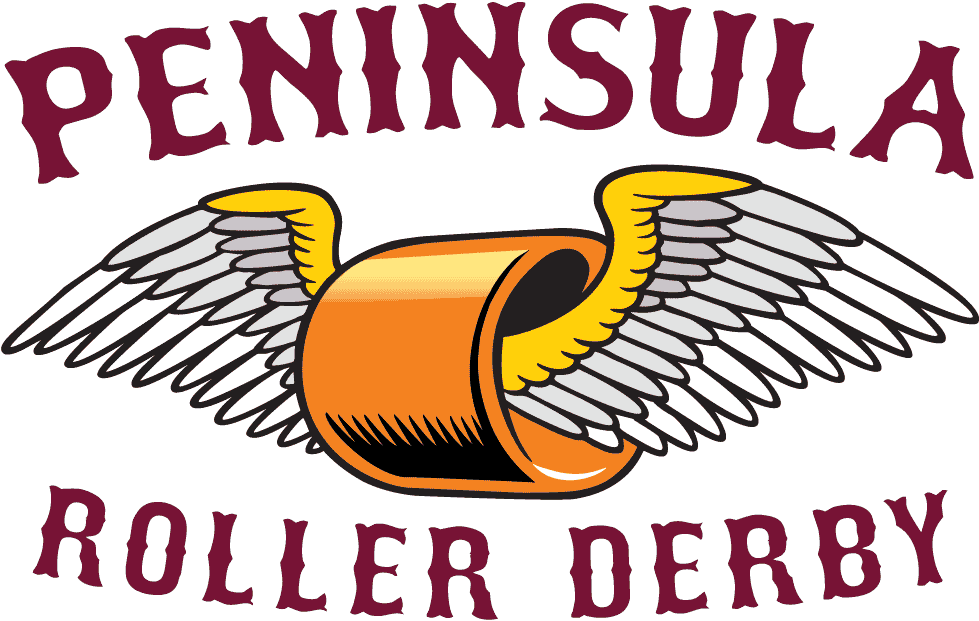A new skater tells me, “I'm always looking for things I can do on my own to improve my skating, especially things that can be done in an apartment/small space or even off skates.” There are so many simple things you can do at home to continue honing your derby skills. Here are a few ideas:
Balance and agility drills
Because we always skate counter-clockwise in derby, if you don’t already have them, you’ll soon develop imbalances between your right and left side. Why is this a big deal? Partly because imbalances keep your weak side weak, and partly because imbalances make you more prone to injury as your body attempts to overcompensate for them. So the next time you’re skating around on all-eights in a pace line carving those imbalances even more deeply into your physique, vow to spend some time doing some of these single-leg exercises to help correct them:
- Single leg deadlift
- Single leg squat
- Split squat (Shout out to my chiropractor, Jordan Shallow, who appears in this video!)
Imbalances aside, it’s important to work on your balance both on and off skates. A quick google search will turn up a ton of balance and agility exercises you can do at home. A couple of easy things I’ve tried in the past include:
- Do arm exercises like bicep curls or overhead presses while standing on a bosu trainer or a half foam roller. Now you’re doing a balance workout and an upper body workout at the same time. Efficiency!
- Draw an agility ladder outside with sidewalk chalk. Do your ladder drills both off-skates and on-skates.
Core Strength
You probably already know that a strong core is super-important for balance and stability on skates, but you might not realize the role a strong core plays in injury prevention. I once had a hip injury that kept me off-skates for a year. The physical therapist who treated me said it was the result of a hip imbalance (ahem, see single-leg exercises above), and recommended specific core exercises to strengthen the transverse abdominis, a muscle that stabilizes the hips. And if there’s any body part that takes a beating in roller derby, it’s the hips. In addition to the crunch variations and planks and glute bridges that were already part of my core-strengthening repertoire (and which you can also do at home), my physical therapist recommended doing this foundation training video or taking a pilates class a few times a week.
Hitting drills
Effective hitting comes down to timing (as you match your speed to the person you’re trying to hit), weight transfer, and the ability to get your foot in front of the person you’re hitting. You can’t practice your timing without someone to hit, but you can practice the other mechanics.
To work on weight transfer, put on your skates and stand next to a wall. Work on picking up the leg closest to the wall, thereby transferring all your weight to the other leg, then bump the wall with your hip. Not only will this exercise help you get used to being on one leg as you go in for the block, bumping the wall will also help you learn how to gauge how close you need to be to the skater you’re trying to hit. (Hint: Closer than you think. You’ll notice that the further you are from the wall, the less stable you are as you lean over to bump it with your hip.)
To work on getting your leg in front, repeat the exercise above but use a chair or stool rather than the wall. Work on picking up your foot and putting it down in front of the chair or stool with your toe pointed in the direction your body would be moving to follow the hit. Then rebalance your weight onto both feet which, in real life, will keep you from following the block out of bounds or will allow you to dig in for the push that follows your hit.
Remember to practice on both sides to stay balanced and strengthen that weak side! And if you’re having trouble opening your hips, try these stretches.
On-Skates drills
If you’ve got three feet of floor space, you can do cone drills. You don’t even need cones. Just throw down a couple pairs of shoes and practice using those edges.
Old School Derby Workout
I was in terrible shape when I decided to learn how to skate in the hopes of making it onto a roller derby team. Such terrible shape that I was embarrassed to put my struggle on display in public at a gym. The first step I took to start getting into shape was to order the Roller Derby Workout video and do it three times a week. It may seem quaint now, and if your fitness level is beyond what mine was, you might not find it enough of a challenge, but if you really are starting from scratch, I recommend you find a copy of this oldie-but-goodie and give it a try.
Do you have other at-home practice ideas? Share them in the comments!

